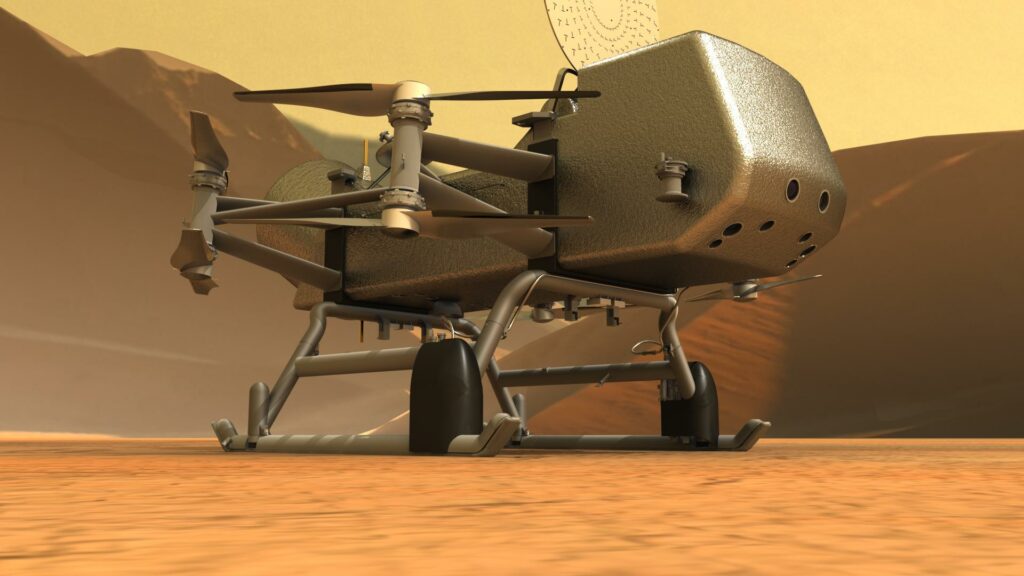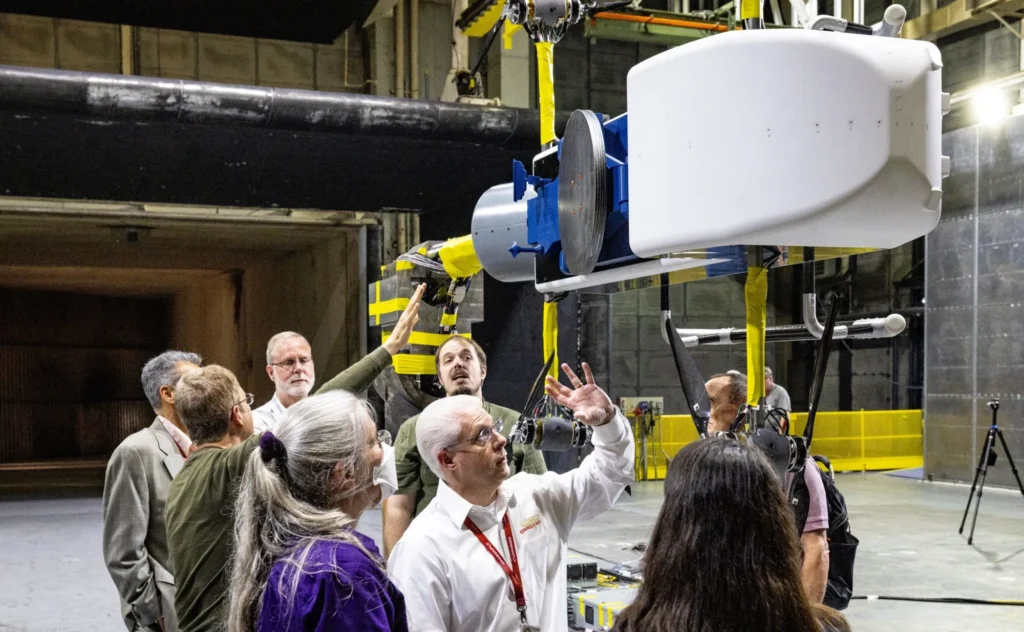NASA engineers carried out a series of tests in the wind tunnel of the Dragonfly drone model. It is designed to study Titan.
Drone for Titan research
Titan is the only moon of the planet in the Solar System with a significant atmosphere. It consists of 98% nitrogen. Its density is four times that of Earth, and the pressure on the surface of the moon is 1.5 atmospheres.

In addition, Titan is also the only known body (not counting the Earth), which has reservoirs filled with liquid on its surface. But if it is water on our planet, then on the largest Saturn moon, its role is played by a mixture of liquid hydrocarbons — mainly methane and ethane. In addition, it is assumed that there is a global ocean under the surface of the moon, consisting of a mixture of ammonia, water and mineral salts.
All this makes the idea of studying Titan with the help of a spacecraft very attractive. In 2019, NASA approved a mission called Dragonfly. Within its framework, it is planned to send a rotary-wing spacecraft with a total weight of about 450 kg to Titan. It will be equipped with four double screws, allowing it to move at a speed of about 36 km/h and climb to a height of up to 8 km. The drone’s power supply will be provided by a radioisotope thermoelectric generator (RTG).
The main task of the spacecraft will be to search for complex organic molecules and assess the overall suitability of this celestial body for life. The drone will be able to collect samples from the Titan’s surface and conduct chemical analysis. Dragonfly will also study the moon’s terrain, its atmosphere, and its hydrocarbon reservoirs.
Wind Tunnel Tests
The implementation of the Dragonfly project is entrusted to the Johns Hopkins University Applied Physics Laboratory. Currently, its specialists are actively testing a prototype drone. The tests are carried out in wind tunnels belonging to the Langley Research Center.

One series of tests was conducted in a subsonic tunnel. Engineers tested a full-scale model of a drone with eight rotors. The main focus was on two configurations: the descent of the Dragonfly and the transition to electric flight after arrival on Titan, as well as flying over the surface of Titan in a forward direction. According to experts, in total, they performed more than 700 launches, during which more than 4,000 separate data sets were obtained.
The second series of tests was carried out in a transonic tunnel. Their main feature was that it was filled with heavy gas. This made it possible to create conditions close to the atmosphere of Titan. Engineers tested the operation of Dragonfly rotors in various modes. The data obtained will allow them to better understand what kind of lift they will be able to generate in a real flight on Titan and what loads they will be subjected to.
At the moment, the launch of the Dragonfly mission is scheduled for 2027. It will begin studying Titan in 2035.
Follow us on Twitter to get the most interesting space news in time
https://twitter.com/ust_magazine
